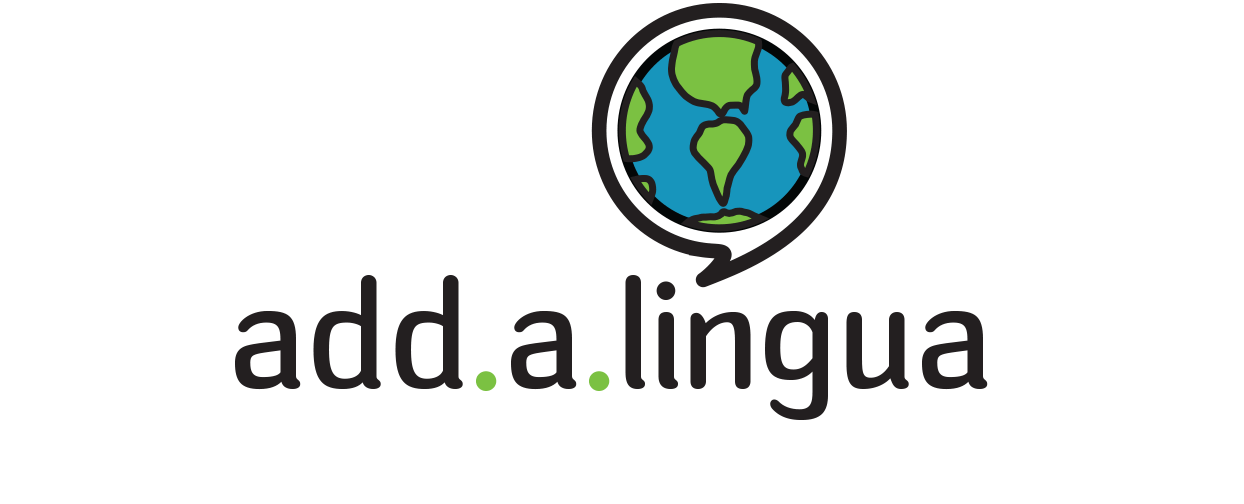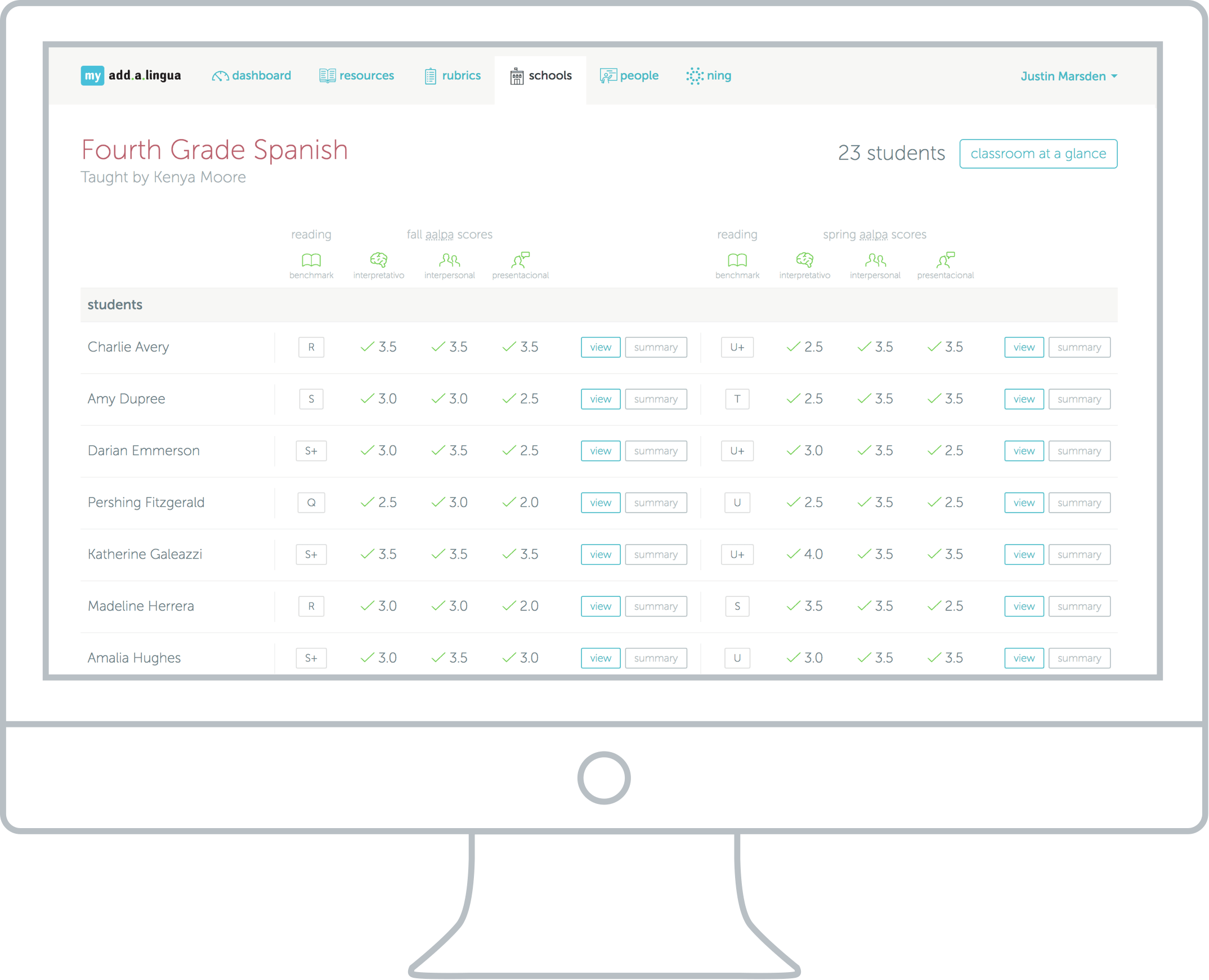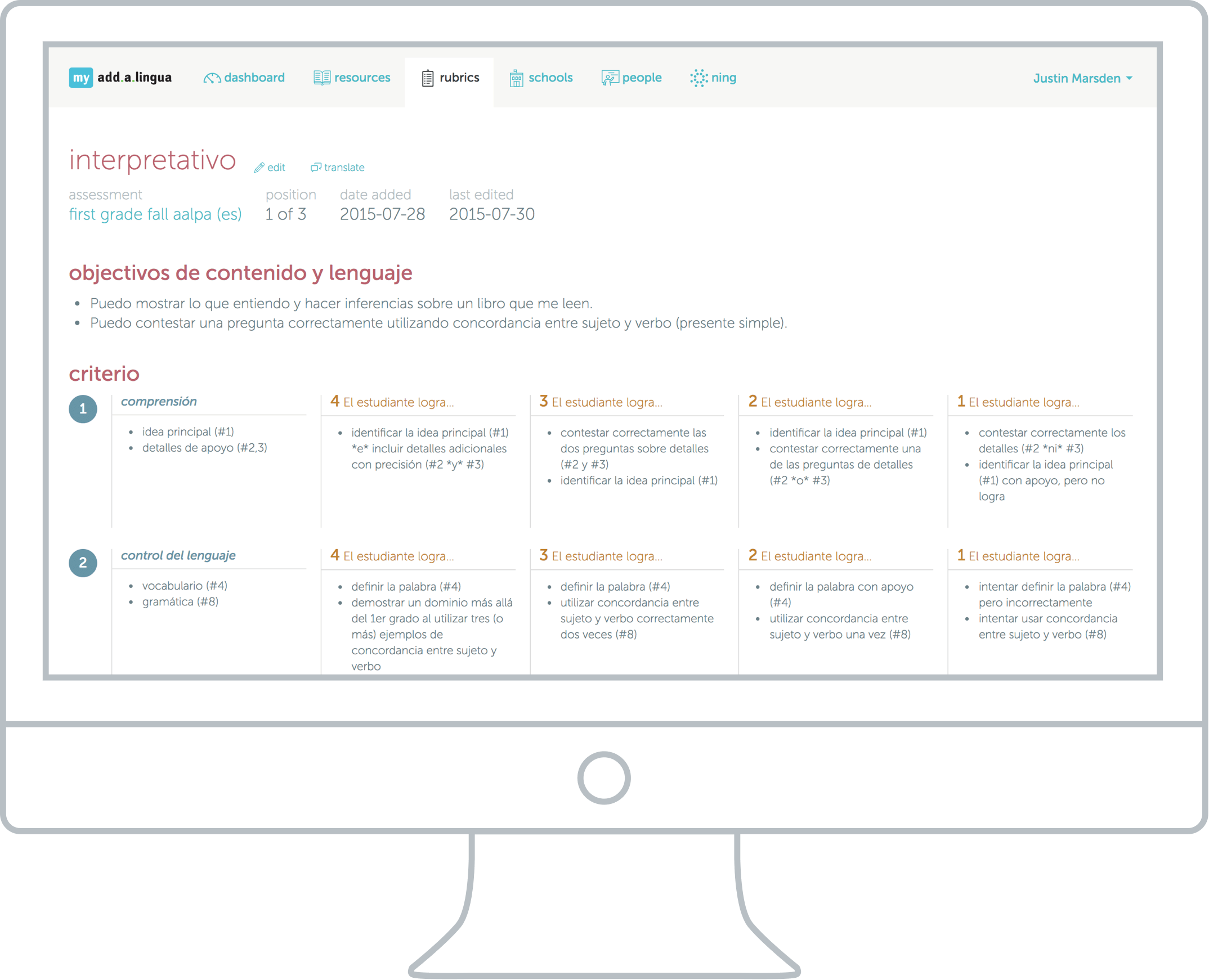Collective Idea’s willingness to understand the client is paramount. They’re investing their time in us because they believe in add.a.lingua’s mission and vision. That is really empowering for us as a client and it really engenders loyalty.
– Lilah Ambrosi, add.a.lingua co-founder

Not Lost in Translation
Understanding add.a.lingua's real needs
Collective Idea created a custom content management system to house educational materials for add.a.lingua. The completely scalable system led to greater organization, easier maintenance of documents, saved time and money.
Services offered
Front-end development, back-end development, UI and UX design, asset management system development.
Overview
add.a.lingua started in 2009 when co-founders Stacey Vanden Bosch and Lilah Ambrosi noticed global trends were pointing to the need to graduate students equally proficient in both English and another language.
Together, the two educators developed curriculum for quality dual language immersion education that they share with partner schools throughout the nation. In addition to developing and sharing multilingual educational resources, they provide training and support, track student data, and work with partner schools to ensure adherence to high quality program expectations.
As add.a.lingua grew, so did the need to simplify some of their processes. One such process was to put teacher assessment rubrics online so data could be easily collected for longitudinal analysis. As it stood, the rubrics were in paper format and centralized data collection was near impossible.

Process
Discovering Pain Points
Through a mutual acquaintance, add.a.lingua turned to Collective Idea for help. As we began the discovery phase of the add.a.lingua’s needs, a pain point much larger than online rubrics bubbled to the top: document management.
In Stacey and Lilah’s own words, document versioning was their own internal nightmare.
- Management of materials was clunky since they were created and managed in Google Docs and Pages, then saved into Dropbox.
- Too many hands involved in content creation made it nearly impossible to find the original document or track and manage changes.
- Final educational materials were in print form only, making it extremely difficult to update documents as needed.
- Printing and mailing final documents to schools on an annual basis was not environmentally or fiscally beneficial.
Our Solutions
We immediately began work on a custom content management system and within several months, my.addalingua was born. The system houses all of their content in one place and is password protected so teachers can log in on their own to access the most up to date documents. This easy document access not only freed up administration time for Stacey and Lilah, but also eliminated the need to have to print and mail new material every year.

We also addressed their other pain points with the following:
- Built document versioning into my.addalingua to trace a document’s lifecycle.
- Gave administrators the ability to create as many document drafts as needed, and then publish a final version for all to see.
- Included rollback functionality so administrators have the power to return to a previous document version if needed.
- Made my.addalingua completely scalable so that as add.a.lingua adds schools across the country, the system can handle increased content and users.

Results
Everything we built into my.addalingua was a direct response to solve specific pain points Stacey and Lilah experienced on a daily basis. By putting all of their content online we helped them towards their goal of longitudinal analysis of students’ progression. In the same breath, making content available through the my.addalingua dashboard makes it easier for teachers to access the tools they need.

Specs
Industry
Education
Platform
Web
Skills & Technologies used
Ruby on Rails, JavaScript frameworks, PostgreSQL, Memcached, Amazon S3, Honeybadger, Turbolinks, ES6, RSpec, Puma
